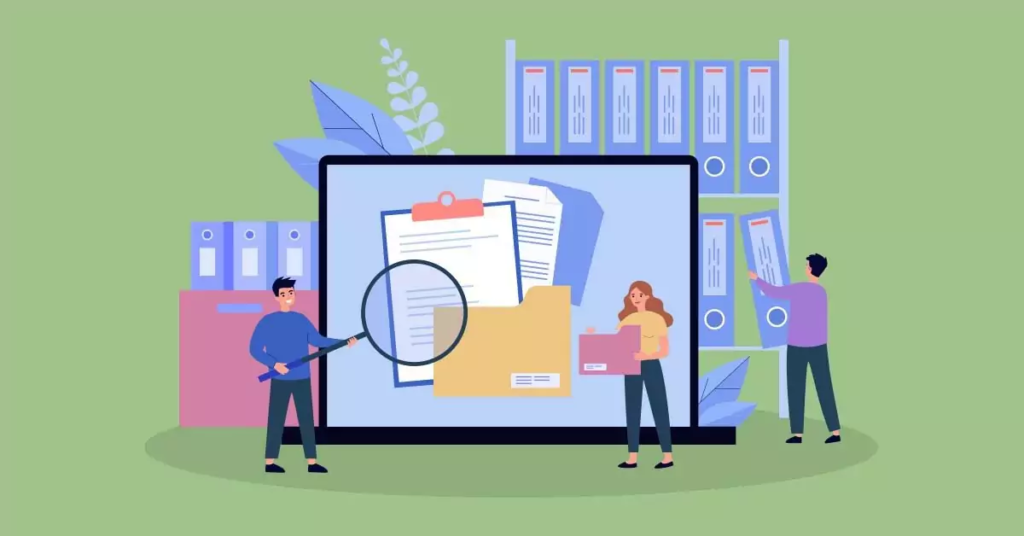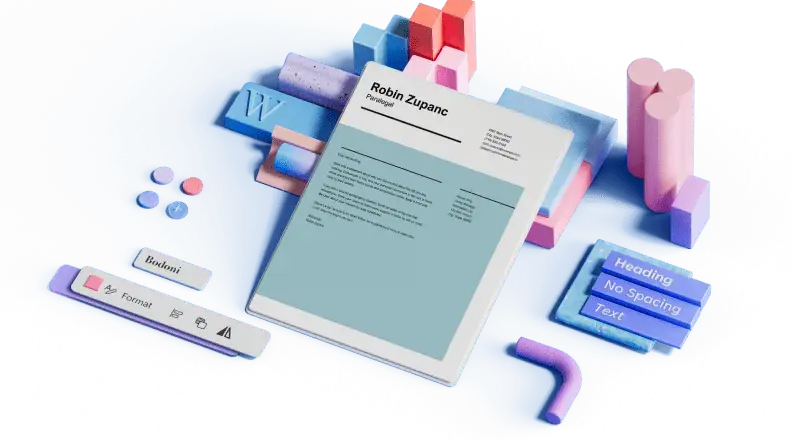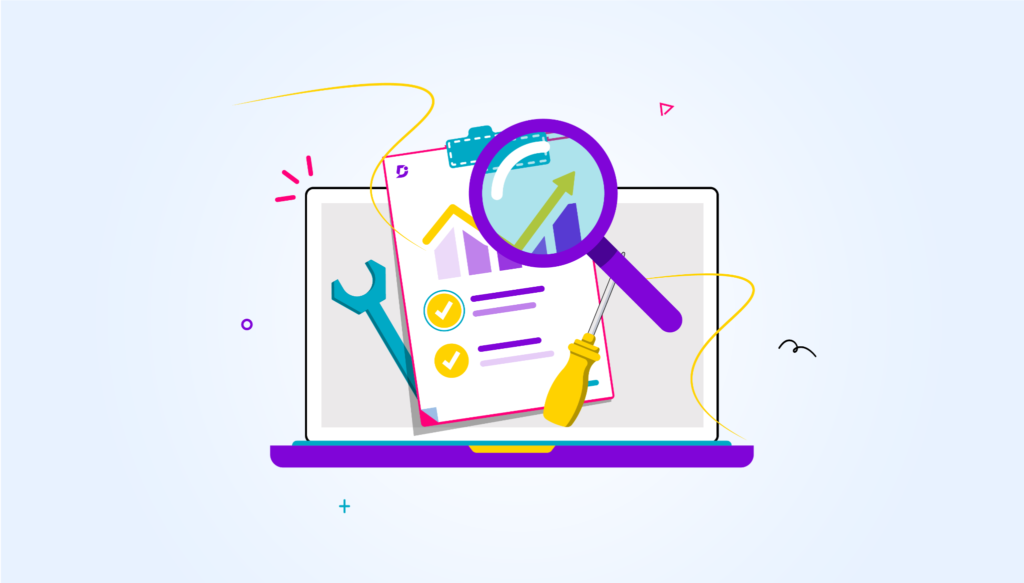In the dynamic world of information technology (IT) and technical industries, documentation is a fundamental pillar that ensures smooth operations. It serves as a guide for procedures, instructions, and troubleshooting, helping to ensure consistency and efficiency.
This blog post will delve into the 12 best practices for creating document templates for IT and technical documentation, using Natural Language Processing (NLP) techniques and incorporating relevant keywords naturally.
Understanding the Importance of IT and Technical Documentation
Before we dive into the best practices for creating the best document templates, it’s important to understand the value of IT and technical documentation.
Why Documentation Matters
Documentation in IT and technical fields is not just about filling files with information. It serves multiple purposes, acting as an essential tool for communication, standardization, and knowledge preservation.
It provides a reference point for processes, standards, and procedures, ensuring that tasks are performed consistently, correctly, and efficiently. Proper documentation facilitates knowledge transfer, ensuring valuable information and experience don’t leave the organization when staff members do.
Moreover, documentation is crucial for troubleshooting. It allows problems to be diagnosed and resolved quickly, minimizing downtime and disruption.
Finally, in many industries, maintaining proper documentation is a regulatory requirement. It aids in maintaining regulatory compliance, ensuring that all operations adhere to the necessary standards, and can provide proof of compliance if needed.
The Role of Templates in Documentation
Templates are essential in creating consistent, efficient, and professional documentation. They provide a structured format, ensuring all necessary information is included and presented clearly.
Templates save time and effort, eliminating the need to start from scratch each time a new document is created. They also promote consistency, ensuring that all documents have a similar look and feel, which makes them easier to read and understand.
Now, let’s delve into the 12 best practices for creating the best document templates for IT and technical documentation.
Define Your Audience
Understand Your Readers
The first step in creating effective documentation is understanding your audience. Knowing who will read your documents will help you tailor the language, style, and level of detail to their needs and understanding.
This involves identifying readers’ roles, technical knowledge and needs to create useful and easy-to-understand documents.
Cater to Different Skill Levels
Remember that your audience could range from beginners to experts. Therefore, your documentation should cater to all levels, providing detailed explanations where necessary and avoiding overly technical jargon that could confuse less experienced readers.
In addition, consider the different ways people learn. Some prefer text-based instructions, while others benefit more from visual aids such as diagrams or screenshots. Try to cater to these different learning styles in your documentation.
Maintain Consistency
Use Standardized Formats
Consistency is key in documentation. Standardized formats, terms, and definitions across all documents ensure they are easy to understand and follow. It also makes it easier for readers to find the information they need as they become familiar with the structure and layout of your documents.
Implement a Style Guide
Consider implementing a style guide for your documentation. This will set the rules for language use, formatting, and the presentation of information, ensuring consistency across all documents.
A style guide can cover everything from the font and colour scheme to be used to the way headings and subheadings are formatted to the use of bullet points or numbered lists. It can also specify the tone and style of writing, such as whether to use active or passive voice, first or third person, and formal or informal language.
Use Clear Language
Avoid Jargon
While it’s important to be technically accurate, avoid using jargon that your audience may not understand. Use clear, simple language wherever possible. This not only makes your documents more accessible to less technical readers but also makes them easier to translate into other languages if necessary.
Explain Technical Terms
If you must use technical terms, provide explanations or definitions within the text or in a separate glossary. This will ensure that your documentation is accessible to all readers, regardless of their level of technical knowledge.
Include Visual Aids
Use Diagrams and Charts
Visual aids can greatly enhance the understanding of technical concepts. Incorporate diagrams, charts, and other graphics to illustrate processes, systems, and relationships.
These visual aids can be particularly useful for explaining complex concepts or procedures, showing how different components interact, or providing an overview of a system or process.
Provide Screenshots
In IT documentation, screenshots can be particularly helpful. They provide a visual guide for software or system operations, making instructions easier to follow.
When using screenshots, ensure they are clear and easy to read, and consider adding annotations or highlights to draw attention to the relevant parts.
Keep Documentation Up-to-Date
Regularly Review Documents
Technology evolves rapidly, and your documentation should keep pace. Regularly review and update your documents to reflect current practices and standards. This will help ensure your team always works with the most accurate and up-to-date information.
Implement Version Control
Use version control for your documents. This allows you to track changes, maintain previous versions, and ensure everyone uses the most up-to-date information.
Version control is especially important in collaborative environments, as it allows multiple people to work on a document without overwriting each other’s changes. It also provides a history of changes to see who made what changes and when which can be useful for auditing purposes.
Make Documentation Accessible
Store Documents Centrally
Store your documents in a central, easily accessible location. This could be a shared drive, an intranet site, or a dedicated documentation platform.
Central storage makes it easier for your team to find and access the necessary documents and ensures that everyone works from the same document version.
Ensure Searchability
Ensure that your documents are easily searchable. This means using clear titles, headings, and keywords and implementing a robust search function in your document storage system.
In addition, a tagging or categorization system should be implemented to help users find related documents. This can be particularly useful in large organizations with a lot of documentation.
Design Templates for Different Document Types
Create Specific Templates
Different documents serve different purposes and, therefore, require different templates. For example, a user manual will have a different structure from a technical specification or a troubleshooting guide.
Identify the different types of documents your organization needs and create specific templates for each one. This will ensure each document has a structure suited to its purpose and content.
Customize Templates
While consistency is important, don’t be afraid to customize templates for specific needs. This could involve adding or removing sections, changing the order of information, or adjusting the level of detail.
Remember, the goal of a template is to make the documentation process easier and more efficient, not constrain it. So, be flexible and willing to adapt your templates as needed.
Use Automation Where Possible
Automate Document Creation
Consider using tools that automate document creation. These could include software that auto-generates documentation from code comments or templates that automatically populate data from your systems.
Automation can save time and effort, reduce the risk of errors, and ensure consistency across your documents. However, remember that automated documents should still be reviewed and edited as necessary to ensure their quality and readability.
Implement Auto-Updates
Look for ways to automate updates to your documents. This could involve linking your documents to your systems so that changes in processes or standards are automatically reflected in your documentation.
This can be particularly useful for maintaining up-to-date technical specifications or system documentation, as it ensures that your documents always reflect the current state of your systems.
Encourage Feedback
Implement a Feedback System
Encourage feedback on your documentation. This could be through a comment section, a rating system, or regular reviews with your users.
Feedback is a valuable source of information about how well your documents are meeting the needs of their users. It can highlight areas where your documents are unclear, incomplete, or outdated and provide ideas for improvement.
Act on Feedback
Use the feedback you receive to continuously improve your documentation. This will help ensure that it remains relevant, accurate, and user-friendly.
Remember, documentation is not a one-time task but an ongoing process. So, be open to feedback and willing to change based on it.
Test Your Documentation
Conduct User Testing
Just like software, your documentation should be tested. Conduct user testing to ensure your documents are clear, understandable, and helpful.
This could involve asking a sample of users to follow the instructions in your documents and provide feedback or conducting usability tests to see how easily users can find and understand the information they need.
Revise Based on Testing
Use the results of your testing to revise and improve your documentation. This will help ensure that it meets the needs of its users and fulfills its intended purpose.
Remember, documentation aims to help its users, so if your testing reveals that your documents are not achieving this goal, don’t be afraid to make changes.
Train Your Team on Documentation Standards
Provide Training
Ensure that everyone involved in creating or maintaining documentation is trained on your standards and practices. This will help ensure consistency and quality across all documents.
Training should cover the use of your templates and style guide, the process for creating and updating documents, and the importance of tasks such as proofreading.
Onboarding Made Easy with OnboardSaaS Plugin
Are you a SaaS company struggling to streamline your onboarding process? Look no further. The OnboardSaaS plugin is designed specifically for you!
With our plugin, we take the hassle out of the onboarding process. We provide an intuitive and interactive platform that allows you to create personalized onboarding experiences for your customers.
No more generic and confusing onboarding processes. With the OnboardSaaS plugin, you can guide your customers step-by-step, ensuring they have all the tools and knowledge they need to fully utilize your software.
And it’s not just about the customers. Our plugin also provides valuable insights into customer behavior during the onboarding process. This way, you can continually optimize your onboarding strategy based on real data.
Don’t let complex onboarding processes hinder your growth. Simplify and streamline with the OnboardSaaS.com plugin.
Ready to revolutionize your onboarding process? Visit OnboardSaaS today and try our free plugin! Experience first-hand how we can transform your customer onboarding journey.
FAQs
What are the top five best practices for creating IT and technical documentation templates?
The top five best practices for creating IT and technical documentation templates include:
- Define Your Audience: Understand who will be reading your documents and tailor the language, style, and level of detail to their needs.
- Maintain Consistency: Use standardized formats, terms, and definitions across all documents to ensure they are easy to understand and follow.
- Use Clear Language: Avoid jargon and use simple, clear language wherever possible. If technical terms are used, provide explanations or definitions.
- Include Visual Aids: Use diagrams, charts, screenshots, and other visual aids to enhance understanding and illustrate complex concepts.
- Keep Documentation Up to Date: Regularly review and update your documents to reflect current practices and standards.
Why is it important to define your audience when creating IT and technical documentation templates?
Defining your audience allows you to tailor your documentation to meet their needs. It helps you determine the appropriate level of technical detail, the best way to present information, and the type of language to use. Understanding your audience ensures that your documentation is useful, relevant, and accessible to those who need it.
How can visual aids enhance IT and technical documentation?
Visual aids such as diagrams, charts, and screenshots can greatly enhance understanding of technical concepts. They can illustrate complex processes, show how components interact, and provide a visual guide for software or system operations. Visual aids can make your documentation more engaging and easier to understand.
Why is it important to keep IT and technical documentation up-to-date?
Technology evolves rapidly, and your documentation must keep pace. Regularly reviewing and updating your documents ensures they reflect current practices and standards. This helps maintain accuracy, relevance, and usefulness. Out-of-date documentation can lead to confusion, inefficiencies, and potential errors.
What role do templates play in IT and technical documentation?
Templates provide a structured format for documentation, ensuring that all necessary information is included and presented clearly and clearly. They promote consistency, making all documents easier to read and follow. Plus, they save time and effort by eliminating the need to start from scratch each time a new document is created.













It seems like you’re repeating a set of comments that you might have come across on various websites or social media platforms. These comments typically include praise for the content, requests for improvement, and expressions of gratitude. Is there anything specific you’d like to discuss or inquire about regarding these comments? Feel free to let me know how I can assist you further!